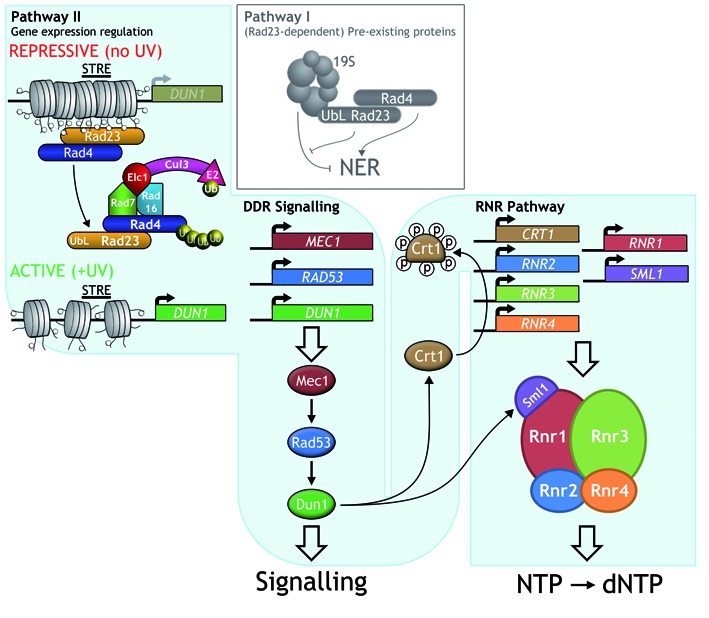Figure 8.

A model for Rad4–Rad23 and GG-NER E3 ligase function in DDR signalling and dNTP synthesis. The top left side and top middle panel of the figure shows the redundant two-pathway NER system as previously described (4). Pathway I involves Rad23 and the 19S proteasome that control NER independently of de novo protein synthesis, while Pathway II involves Rad4 ubiquitination by the GG-NER E3 ligase that regulates the gene expression of DUN1 and DDR2 and other genes described in this study. Ubiquitination of Rad4 (left panel) drives dissociation of the Rad4–Rad23 complex from the promoter region of STRE containing genes. DUN1 is shown as an example. This loss of occupancy promotes increased gene expression. This example is specific for the STRE containing DUN1 gene and other genes from cluster 2 in Figure 3. Rad4–Rad23 binding in the vicinity of the STRE may be direct or indirect. The central signalling cascade of Mec1-Rad53-Dun1 is represented in the middle section, including the RNR pathway as an important end-point in the bottom right panel. In response to DNA damage Crt1 is hyperphosphorylated by activated Dun1. Derepression of the RNR genes by Rad4–Rad23 and Crt1 results in enhanced expression of these genes and subsequent increase of the cellular dNTP pools. The transcription response of DUN1 and RNR1–4 provides downstream substrates for the DDR signalling pathway. How pathway II is activated in response to DNA damage remains to be determined.
